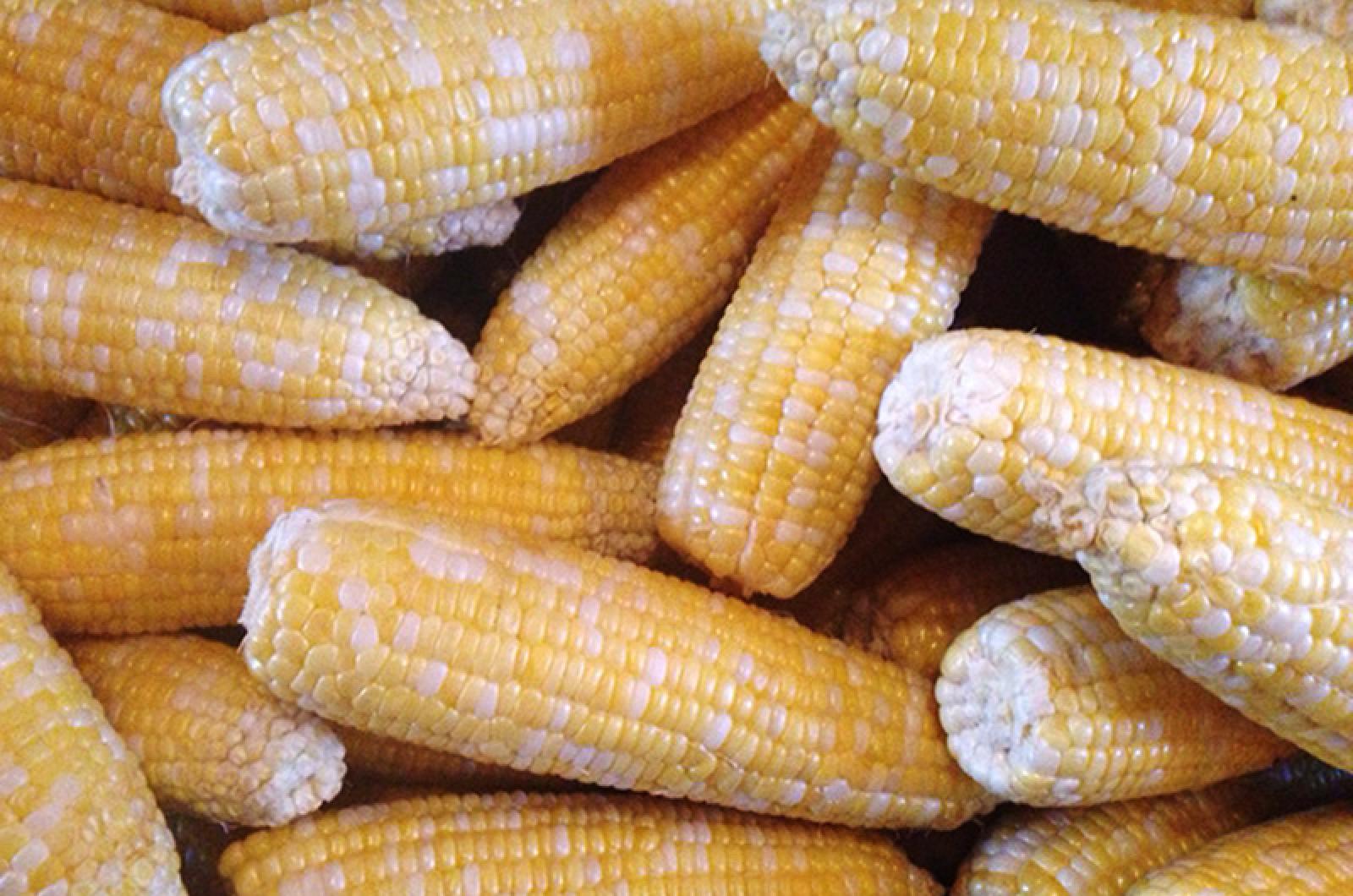Henry David Thoreau spent some of his time in the woods dreaming of favorite foods. In Walden he asks “pray what more can a reasonable man desire, in peaceful times, in ordinary noons, than a sufficient number of ears of green sweet-corn boiled, with the addition of salt?”
There has been a bumper crop of Island corn this season. Thanks to Morning Glory, whose half-price corn sale the other week allowed me to get my fill and more, I have a sufficient number of ears. And these ears will last through the winter after a day spent husking, blanching and freezing the beauteous bounty.
Thoreau and I are not the only ones that are all ears. This staple originally was bred from a native North American wild grass and cultivated in Mexico more than 7,000 years ago. The Iroquois introduced their preferred variety, called pappoon, to European settlers in 1779. Today each of us eats more than 20 pounds of corn per person per year and corn is the fourth most popular vegetable in this country.
Farmers do best when we eat our corn fresh, rather than frozen or canned, as the fresh market accounts for 70 per cent of the value of the product. And in our region, many of us are lucky enough to have our corncobs grown nearby. While Florida, California and Georgia are the largest producers of fresh, sweet corn, in New England, nearly half of vegetable acreage is in corn.
Although there are six types of corn – sweet or sugar, flint, pop, pod, flour and dent – it is the first variety that we eat off the cob and use in our finest succotash. The others have their own identities and uses.
Flint corn has also been called Indian or calico corn and is mostly ornamental or used for hominy. Popcorn needs no explanation. Pod corn is the wild variety with leaves around each kernel; flour corn is obvious, used to make flour. Dent is the field corn used for animal feed, processed foods, such as chips, tortilla and high fructose corn syrup, and to produce plastic and ethanol. Some of those other uses dominate since less than 15 per cent of corn grown is for human consumption.
And, of course, local is most desired, especially if you adhere to the old New England adage that explains the best time to harvest: “Corn is picked when the cooking water starts to boil.” Since the sugar in corns begins to turn into starch once it is picked, the quicker you can get your corn to your pot, the sweeter it is. Corn on the cob is not only delicious but also fascinating. Consider that there is an average of 800 kernels on each ear, every ear has an even number of rows and for each strand of silk (which is the female part of the plant), there is the exact same number of kernels.
This commodity does have it detractors. They lament that the crop uses lots of water and fertilizer, is inefficient to feed people since it is often used to feed animals that feed people, is highly subsidized and can be genetically modified.
Even with those critiques, many of us won’t be giving up corn very soon. And why should we, especially when it comes from our Island back yard and is grown by our friends and neighbors? Morning Glory expects to be picking into November, so it isn’t too late to get your fix. Remember, as one farmer’s market sign read, corn even makes butter taste better.
Suzan Bellincampi is director of the Felix Neck Wildlife Sanctuary in Edgartown, and author of Martha’s Vineyard: A Field Guide to Island Nature.




Comments
Comment policy »